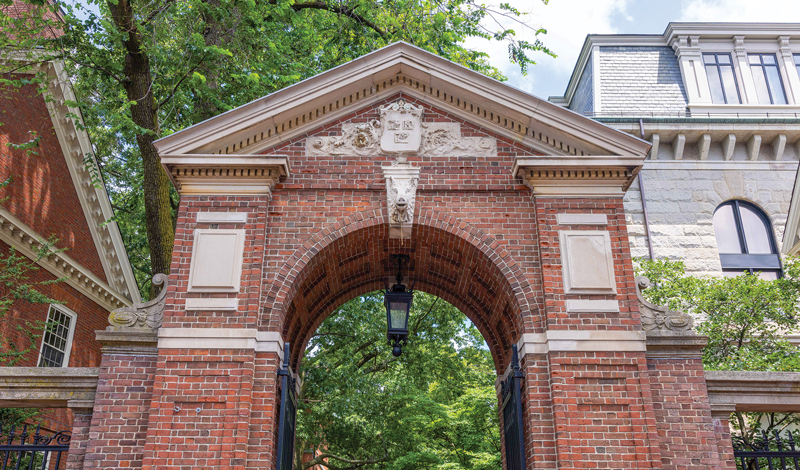When Ikeda Sensei visited Boston in September 1993, he was in the midst of a decade in which he spread the principles of Buddhist humanism around the globe through dialogues with key scholars and leaders, and lectures at universities.
That decade, in the U.S. alone, he held dialogues with peace leaders including journalist and peace advocate Norman Cousins; American Civil Rights hero Rosa Parks; and Harvard University professor and economist John Kenneth Galbraith.
He also spoke at esteemed U.S. educational institutions, delivering his September 1991 and 1993 Harvard University addresses, “The Age of Soft Power” and “Mahayana Buddhism and Twenty-First-Century Civilization,” respectively, and his June 1996 speech at Columbia University, “Thoughts on Education for Global Citizenship.”[1]
His efforts coincided with the SGI’s separation from the authoritarian Nichiren Shoshu priesthood who, in November 1991, excommunicated over 10 million lay practitioners of the Soka Gakkai International in a futile attempt to wrest control of the laity and its resources.
Unshackled from the oppressive tradition that gave Buddhist clergy great power over the lives of ordinary citizens, Sensei emphasized the role religion must play in the 21st century to serve the people and bring about an age deeply rooted in respect for the dignity of life.
In his second Harvard lecture, delivered on September 24, 1993, he explored the Buddhist view of life and death, the critical importance of dialogue in building peace, Buddhism’s role in restoring humanity and the importance for people to recognize the interconnectedness of all life.
Regarding dialogue, he referred to Shakyamuni Buddha’s statement that he perceived an invisible arrow piercing people’s hearts. Sensei said the “arrow” means excessive attachment to difference and asserted that overcoming this kind of attachment is crucial to creating peace.
He continued: “As Josiah Royce [Harvard professor and philosopher] points out, the ‘invisible arrow’ of evil is not to be found in the existence of races and classes external to ourselves but is embedded in our hearts. The conquest of our own prejudicial thinking, our own attachment to difference, is the necessary precondition for open dialogue. Such discussion, in turn, is essential for the establishment of peace and universal respect for human rights.”[2]
He also spoke of the importance of people awakening to their “greater self,” as taught in Mahayana Buddhism, defining it as “another way of expressing the openness and expansiveness of character that embraces the sufferings of all people as one’s own.”
Sensei continued: “This self always seeks ways of alleviating the pain and augmenting the happiness of others, here, amid the realities of everyday life. Only the solidarity brought about by such natural human nobility will break down the isolation of the modern self and lead to the dawning of new hope for civilization. Furthermore, it is the dynamic, vital awakening of the greater self that will enable each of us, as individuals, to experience both life and death with equal delight.”[3]
Senior faculty members in attendance were deeply impressed by Sensei’s perspective on creating a path forward for humanity. Professor Galbraith, renowned economist and key advisor to U.S. President John F. Kennedy from 1961–63, remarked how delighted he was to hear “that marvelous account of the path that we all share in hoping, all share in wishing, [that we] may be on the road to peace.” Harvey Cox, of Harvard’s Divinity School, likewise said: “Mahayana Buddhism … —unlike some other religious traditions in Japan and elsewhere—embraces a broadly universal vision and rejects xenophobia and isolation.” Finally, Nur Yalman, then head of Harvard’s anthropology department, noted how the Soka Gakkai’s excommunication from the Nichiren Shoshu priesthood could be likened to the Protestant Reformation in its effort to return to the essence of Buddhism, saying: “This is a momentous matter, and the outcome of this remarkable struggle will have very important implications for Buddhism elsewhere as well as other religious traditions, because it represents a new development, a new departure.”[4]
During this visit, Sensei put into action the principles he introduced by establishing a research and dialogue center close to the Harvard campus, where SGI members and scholars could continue engaging in dialogue on crucial concepts that form the bedrock of a philosophy of peace. The day of the lecture, September 24, 1993, marks the Boston Research Center’s founding. When their building opened in May 1995, Sensei sent a message, which said in part:
Old structures have collapsed but no new order has emerged in their place, giving rise to widespread anxiety and unease. I feel that the underlying confusion can be traced to the absence of philosophical systems adequate to the task of apprehending our world, and giving us a clear vision of the future. In this sense, an increasing burden of responsibility has devolved upon those who live and work in the world of ideas.
The objectives of the Boston Center go beyond the simple pursuit of knowledge. It was established within the context of a vaster human project; to find out the ideas that can bring hope and happiness to people in the coming century, to seek routes to a world of peace and coexistence.[5]
In 2009, the center was renamed the Ikeda Center for Peace, Learning, and Dialogue, and has brought together academics, professionals and students from all backgrounds to build cultures of peace through learning and dialogue inspired by Buddhist humanism.
You are reading {{ meterCount }} of {{ meterMax }} free premium articles

